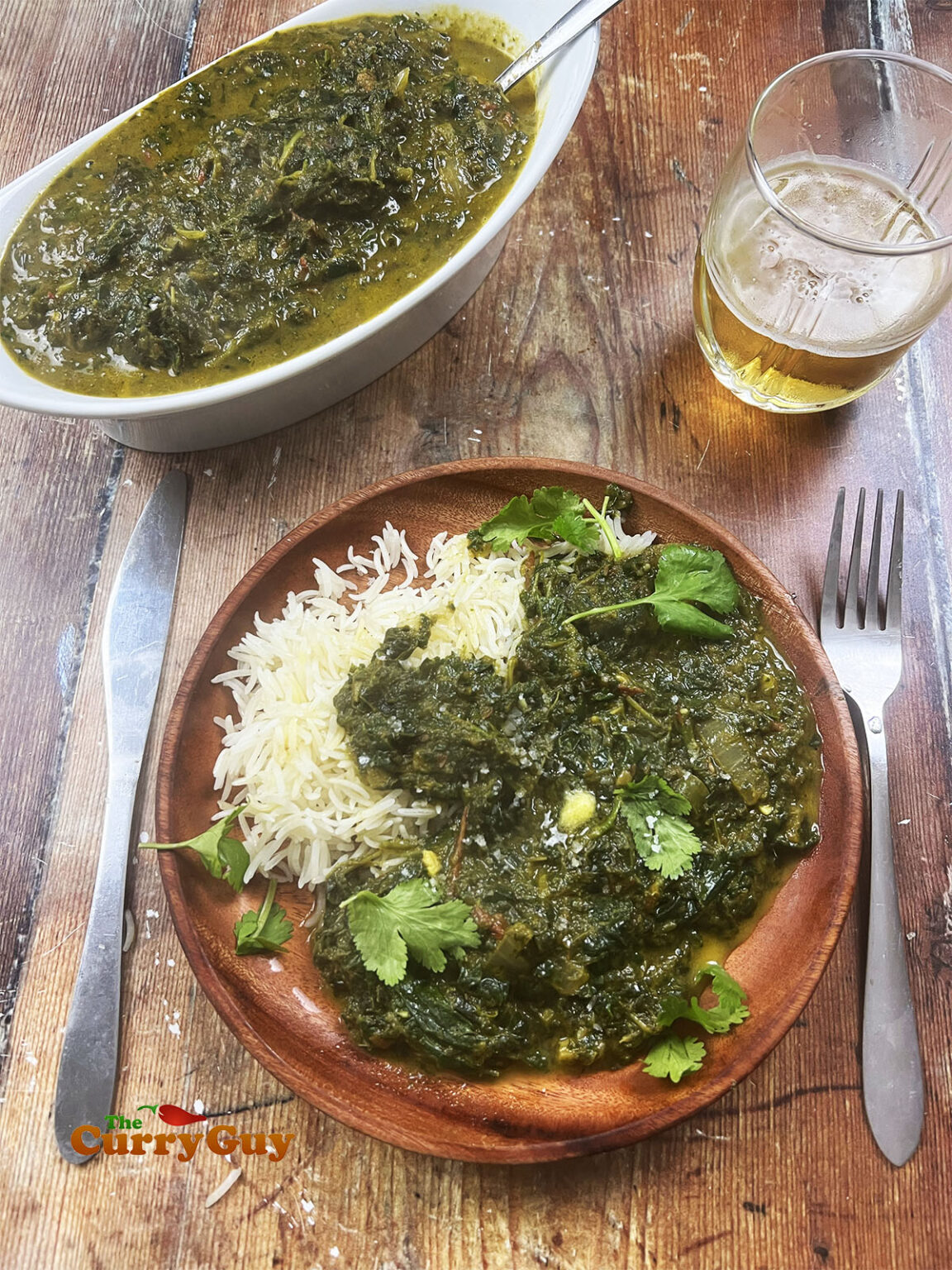This Punjabi saag recipe is my favourite version. Try this!
There’s just something about a good saag. You can serve it just like this or add other ingredients I promise, this saag recipe is one you need to try soon.
I liked it so much, I featured the recipe in my book ‘The Curry Guy One Pot’. It’s easy to prepare and tastes great simply served over white Basmati rice but there’s so much more you can do with this saag.
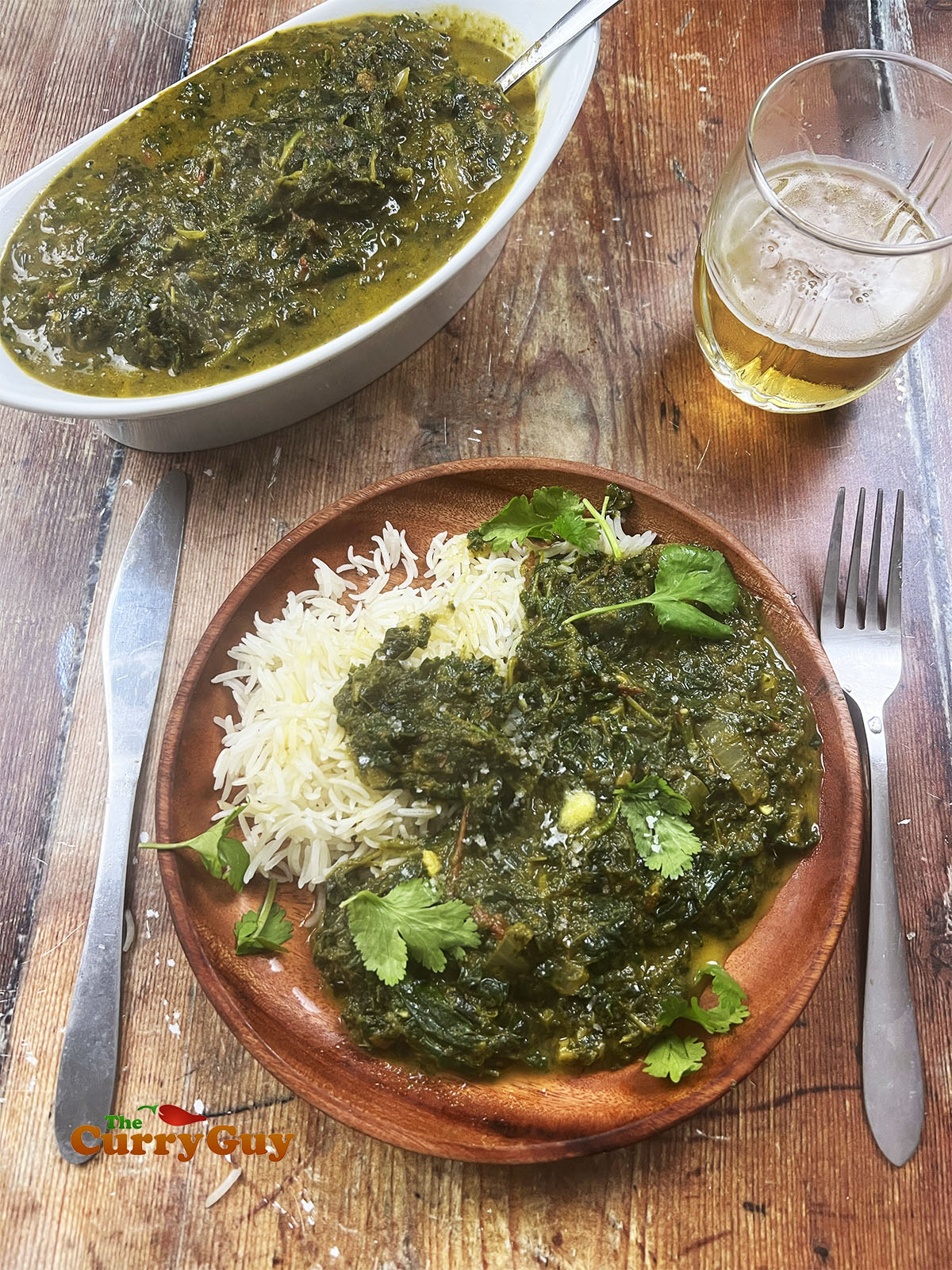

What is saag?
When you think of the word “saag” you might think of a creamy spinach dish you get served at Indian restaurants. “Saag” is a term used in Indian cuisine that refers to leafy green vegetables, and it is also the name of a popular Punjabi dish called “Sarson da Saag.” The dish is made with mustard greens and other leafy vegetables, like spinach.
This saag recipe is for the “Sarson da Saag” version and it is out of this world gorgeous!
About this saag recipe.
This is a recipe from my friend Reena Arora, who runs a takeaway called Reena’s Indian Kitchen in Stanley, Leeds. When I tried it, I simply had to get the recipe to share with you. Saag curries are always good but this recipe takes it all up a few notches. If you enjoy this saag recipe, you might also like to try Reena’s rajma masala recipe here.
What exactly is “Sarson da Saag”?
“Sarson da Saag” is a traditional Punjabi dish hailing from the northern regions of India. It is particularly popular in the state of Punjab and is associated with winter months when mustard greens are abundant. The dish typically includes a mix of mustard greens (sarson), spinach (palak).
I only say northern India because it is a very old and traditional dish in the Punjab, that dates back long before the Partition. So it is also very popular in the Punjab region of southern Pakistan. You can’t serve it with beer there though and I think a good saag curry like this goes so well with that!
How long will this curry keep in the fridge?
You can store Sarson da Saag, covered in the fridge for about 3 to 4 days. Then all you have to do is heat it up in a pan or in your microwave.
Can you freeze this spinach curry?
Yew, you can freeze Sarson da Saag for later use. Freezing allows you to preserve the dish and enjoy it at a later time without compromising too much on its flavour and texture. However, keep in mind that the texture and bright green colouring of leafy greens may change slightly after freezing and reheating.
Tips on freezing sarson da saag:
- Cooling:
- Allow the Sarson da Saag to cool completely before attempting to freeze it. Placing hot or warm food directly in the freezer can raise the overall temperature inside the freezer and affect other frozen items.
- Portioning:
- Portion the Sarson da Saag into meal-sized portions. This makes it easier to thaw and reheat only the amount you need.
- Freezer Containers:
- Use airtight freezer-safe containers or freezer bags to store the Sarson da Saag. Make sure to remove as much air as possible to prevent freezer burn.
- Labeling:
- Label each container or bag with the date of preparation to keep track of freshness.
- Freezing:
- Place the Sarson da Saag in the freezer. For longer storage, it’s advisable not to keep the dish in the freezer for more than 2-3 months.
Tips on reheating the frozen saag:
- Thawing:
- Thaw the frozen Sarson da Saag in the refrigerator overnight. Avoid thawing at room temperature to prevent the growth of harmful bacteria.
- Reheating:
- Reheat the thawed Sarson da Saag on the stovetop over medium heat. Stir occasionally to ensure even heating. You may need to add a little water or broth to adjust the consistency, as freezing can sometimes affect the texture.
- Fresh Additions:
- Consider adding a touch of fresh ghee or butter and a sprinkle of garam masala when reheating to enhance the flavors.
What else can you do with this saag recipe?
A lot is the simple answer. You can enjoy it just as it is but it is also good with other proteins. Stir in some fried or raw paneer cubes and you have a delicious version of saag paneer. You can also add chicken or lamb. If you would like to keep this a vegetarian dish, try adding chickpeas or cooked potato chunks. All of these options are great.
When adding cooked chicken or lamb, I often stew the meat and add a little of the cooking stock to it as well.
Pro Tips
Making Sarson da Saag, requires attention to detail to achieve the right flavours and texture. Here are three tips to help you make delicious Sarson da Saag:
- Mix of Greens:
- Sarson da Saag traditionally includes mustard greens (sarson) and spinach (palak). To enhance the flavour profile, you can also add other seasonal greens like fresh methi (fenugreek leaves) or radish greens to taste. The combination of different greens adds depth and complexity to the dish. Ensure that the greens are fresh, and clean them thoroughly before chopping.
- Slow Cooking for Flavor:
- Allow the greens to cook slowly to develop rich flavours. Simmering the greens with ginger-garlic paste, green chilies, and spices over a moderate heat helps the ingredients meld and intensifies the taste. The slow cooking process allows the greens to break down and become tender, contributing to the overall texture and taste of the dish.
- Add ghee and/or butter:
- Use ghee (clarified butter) for tempering, as it adds a rich and nutty flavor to the dish. Heat the ghee in a pan. You can also add a some cumin seeds but in this recipe the cumin seeds are added at the beginning of cooking. Pour the tempered ghee over the saag. This final touch enhances the overall taste and aroma of the dish. If you prefer, you can also add a sprinkle of garam masala during tempering for an extra layer of warmth.
Remember to adjust the spices, including turmeric, red chili powder, and coriander powder, according to your taste preferences. Sarson da Saag is often enjoyed with homemade chapattis.
Step by step photographs


Get all your ingredients together before you start cooking. It’s a lot easier that way.
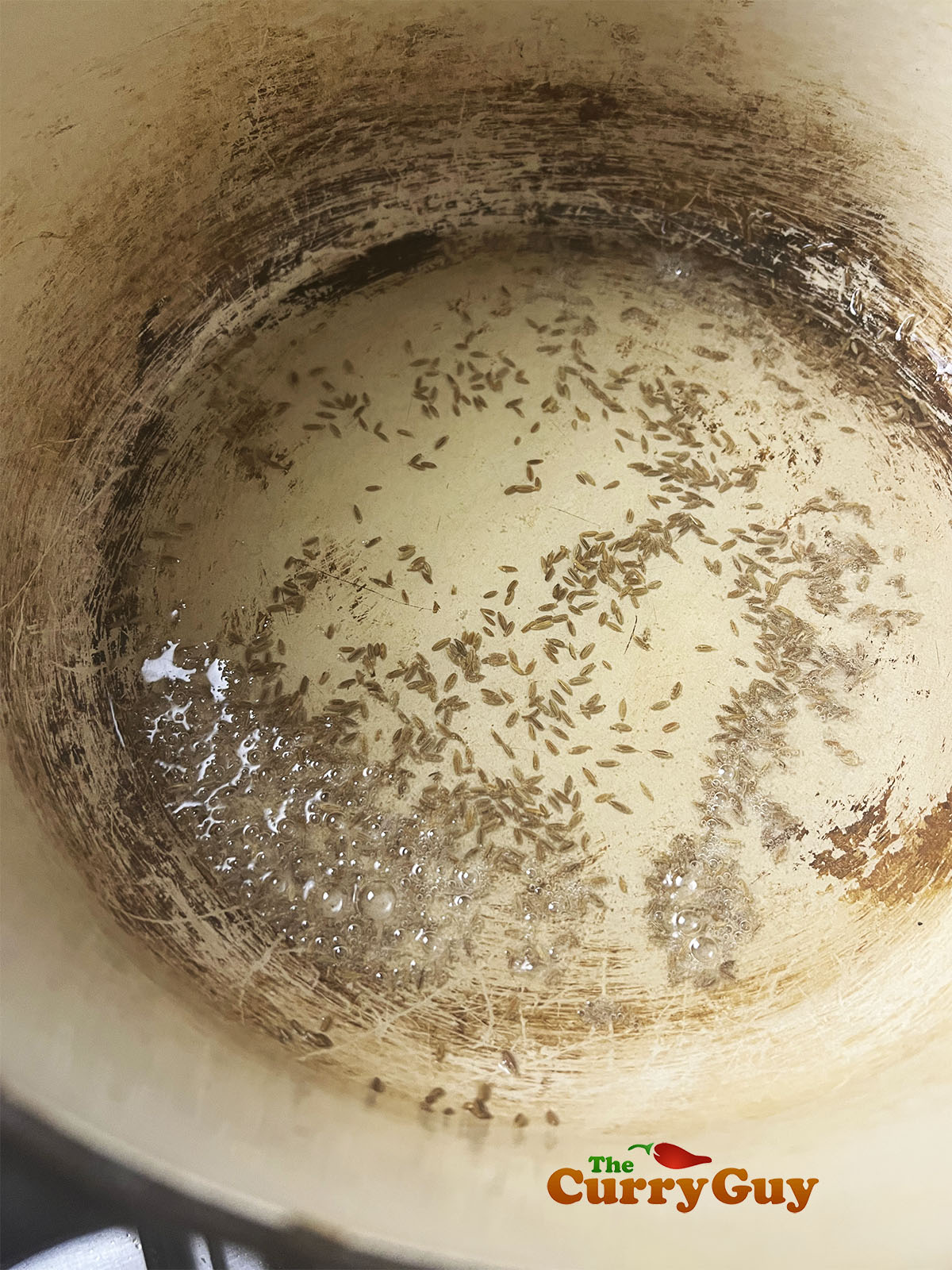

Heat the oil over a medium-high heat in a large saucepan and stir in the cumin seeds. Let them infuse into the oil for about 30 seconds.
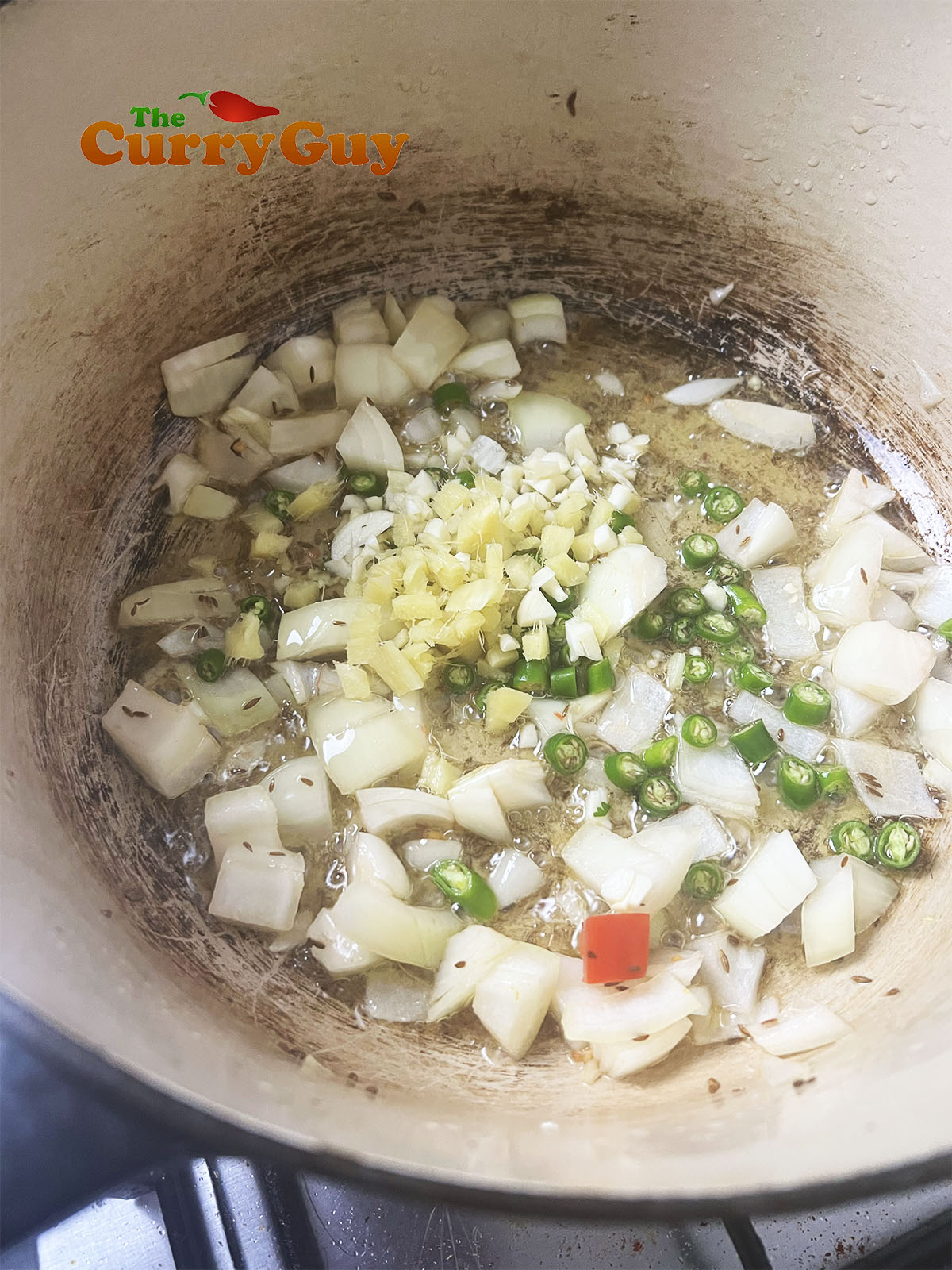

add the chopped onion and fry for about 3 minutes to soften. Add the garlic, ginger and chillies and continue frying for another minute or two.
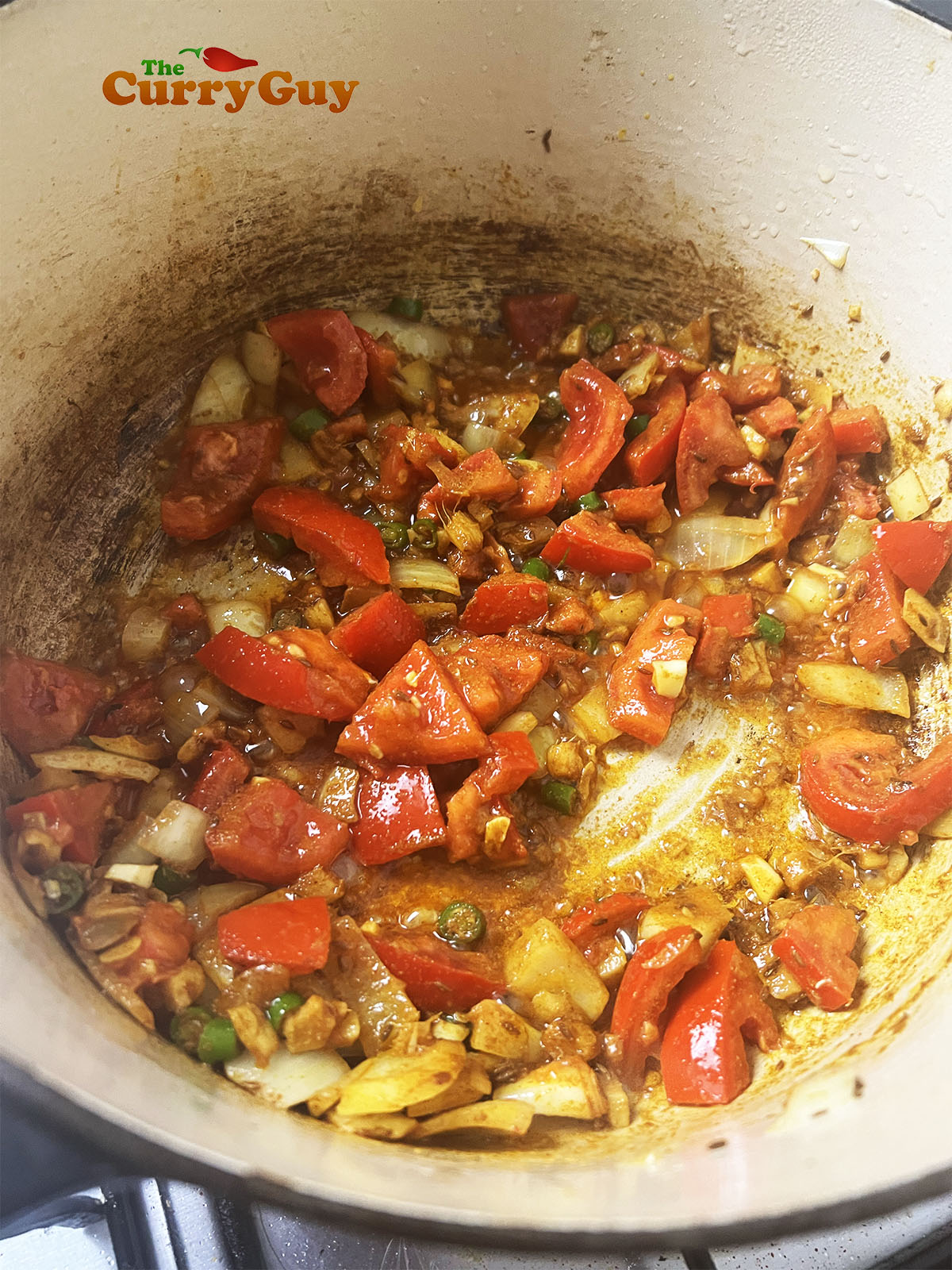

Stir in the diced tomatoes and the ground spices.
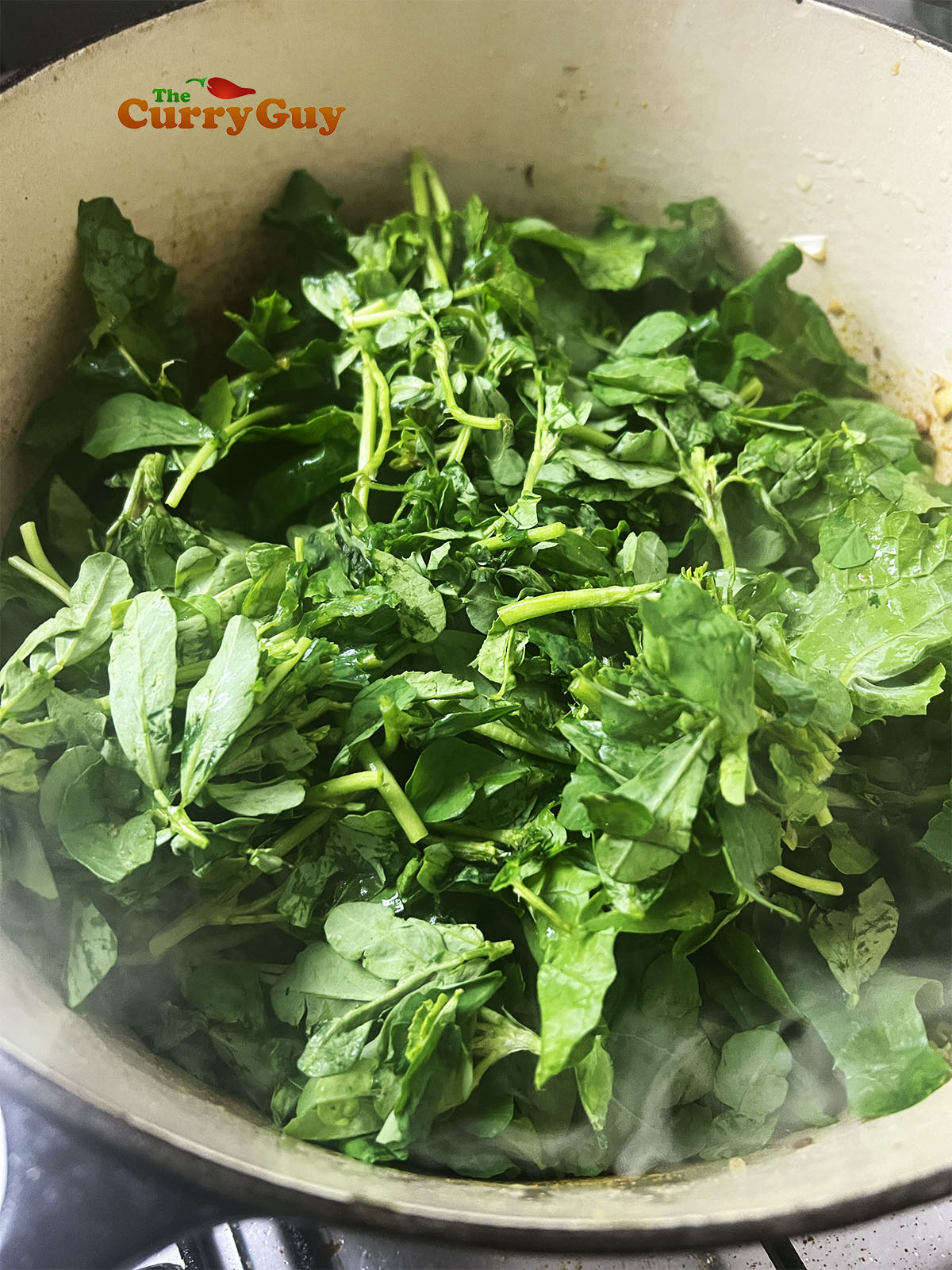

Then add the greens in small amounts until they have wilted.
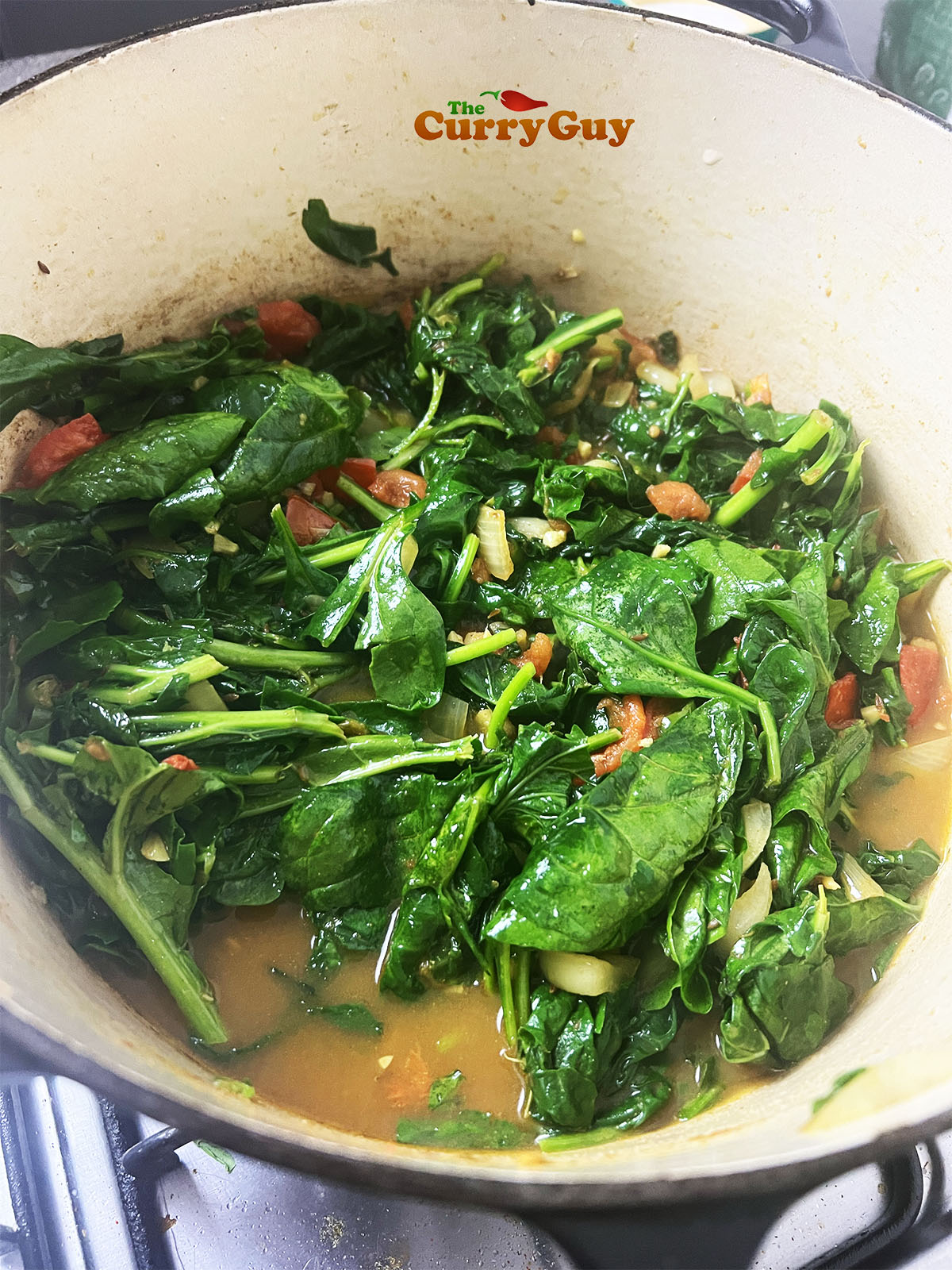

Add the water and bring to a simmer, then blend it all together. I find it easier to do this in a countertop blender, but a stick blender will also work.


Add the cornmeal flour and stir it in. Cover the pan and simmer over a low heat for about 15–20 minutes, or until you are happy with the consistency. Season with salt to taste and stir in the ghee.


All done. This saag recipe is quick and easy and tastes amazing!
Have you tried this saag recipe?
If yes, please give it a star rating in the comments below and leave a comment. I love receiving your feedback and I’m sure other readers of my blog do too. Thank you.
Prep Time
15 minutes
Cook Time
30 minutes
Total Time
45 minutes
Ingredients
- 2 bunches (approx. 150g/5½oz) mustard leaves, chopped
- 240g (9oz) spinach leaves, chopped
- ½ bunch (approx. 80g/3oz) fresh fenugreek leaves, chopped
- 2 tbsp rapeseed (canola) oil
- 1 tsp cumin seeds
- 1 medium white onion, roughly chopped
- 6 cloves of garlic, roughly chopped
- 2.5cm (1in) ginger, roughly chopped
- 2–3 green finger chillies
- 2 tomatoes, diced
- 2 tsp ground coriander
- 1½ tsp ground cumin
- ½ tsp Kashmiri chilli powder (more or less to taste)
- ¼ tsp ground turmeric
- 125ml (½ cup) water
- 1 tbsp fine cornmeal flour
- Salt, to taste
- 2 tbsp butter or ghee
Instructions
- Prepare the greens by washing thoroughly under cold running water to remove any dirt or sand. Heat the oil over a medium-high heat in a large saucepan and stir in the cumin seeds.
- Infuse the cumin seeds into the oil for about 30 seconds, then the add the chopped onion and fry for about 3 minutes to soften.
- Add the garlic, ginger and chillies and continue frying for another minute or two. Stir in the diced tomatoes and the ground spices.
- Then add the greens in small amounts until they have wilted. Add the water and bring to a simmer, then blend it all together. I find it easier to do this in a countertop blender, but a stick blender will also work.
- Add the cornmeal flour and stir it in. Then cover the pan and simmer over a low heat for about 15–20 minutes, or until you are happy with the consistency. Season with salt to taste and stir in the ghee.
Recommended Products
As an Amazon Associate and member of other affiliate programs, I earn from qualifying purchases.
Nutrition Information:
Yield:
4
Serving Size:
1
Amount Per Serving:
Calories: 345Total Fat: 11gSaturated Fat: 6gTrans Fat: 0gUnsaturated Fat: 4gCholesterol: 23mgSodium: 236mgCarbohydrates: 59gFiber: 8gSugar: 16gProtein: 10g



